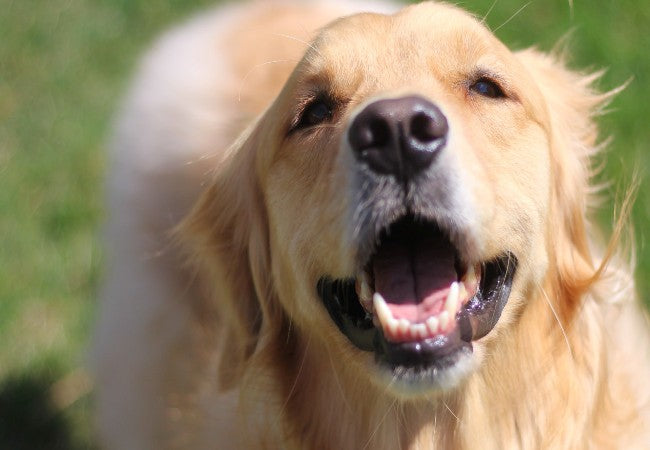Canine Ameloblastoma (Jaw Tumors) – Vet Led Guide 2025 🐶🦷

In this article
Canine Ameloblastoma (Jaw Tumors) – Vet Led Guide 2025 🐶🦷
By Dr. Duncan Houston BVSc
Hello, I'm Dr Duncan Houston, BVSc, founder of Ask A Vet. In this detailed 2025 update, we’ll explore canine ameloblastoma—a benign but aggressive jaw tumor. As your vet guide, I’ll help you understand its causes, signs, diagnosis, treatment options, recovery tips, and how to maintain your dog’s quality of life with compassion and clarity. 🐾
📘 What Is Ameloblastoma?
Ameloblastoma is an odontogenic tumor originating from enamel-producing cells. While usually benign, it can aggressively invade bone and displace teeth. In rare cases, malignant variants have been identified—but most are locally destructive rather than metastatic.
Known types include the common acanthomatous ameloblastoma (previously acanthomatous epulis), and the less frequent desmoplastic subtype with dense fibrous stroma.
📊 Who Gets It & How Common Is It?
Occurs mostly in middle-aged to older dogs (6–10+ years), but it can affect dogs as young as 3 and even up to 19 years old. No strong breed predilection, but cocker spaniels, golden retrievers, and Shelties tend to be common.
🚩 Signs & Symptoms
- Firm oral mass—often on the mandible or maxilla
– May be ulcerated or nodular - Tooth displacement or looseness—observed in 100% with retained teeth in one study
- Drooling, bad breath (halitosis), difficulty chewing or dropping food
- Pain or reluctance to open wide, mouth bleeding in advanced cases
- Facial swelling, deformity, or expansion of bone—radiographs may reveal a “soap-bubble” appearance
🔬 Diagnosis: What the Vet Will Do
- Physical & oral exam: Check mass, mobility, ulceration, and lymph nodes.
- Imaging: Dental X-rays, CT or CBCT to assess bone involvement, tooth displacement, lytic/proliferative patterns.
- Biopsy: Required to confirm acanthomatous ameloblastoma and distinguish from epulis or squamous cell carcinoma.
- Histopathology: Shows characteristic nests of odontogenic epithelium with interspersed stroma.
- Staging: Ensure no metastasis—though rare, malignant variants may metastasize (~2%).
🦷 Treatment Options
1. Wide Surgical Excision (Gold Standard)
En bloc resection of the tumor plus ~1–2 cm margin of healthy bone yields best outcomes. Margins ≥1 cm reduced recurrence; 2 cm margins achieved 0% incomplete cases.
Often includes partial mandibulectomy or maxillectomy, depending on tumor location. Despite large resections, dogs generally adapt well with minimal ongoing discomfort.
2. Rim Excision for Small Lesions
In small (<2 cm) gingival tumors with minimal bone invasion, rim excision may suffice—less invasive, but the recurrence risk is higher.
3. Alternative Radiation Therapy
Orthovoltage radiation achieved a median survival of 37 months in one 1984 study—an option for dogs who cannot undergo surgery.
4. Rare Malignant Cases
When malignant ameloblastic carcinoma is diagnosed, treatment is similar—wide excision. Metastasis is rare but possible, and chemotherapy/radiation may not always help.
📅 Prognosis & Recurrence
- Surgical resection with wide margins = excellent local control, minimal recurrence.
- Minor resections or enucleation = higher recurrence rates—follow-up essential.
- Desmoplastic subtype behaves similarly—use wide margins.
- Metastasis rarely occurs, under 2%—monitor lymph nodes/lungs.
- Follow-ups with oral exams and imaging every 6 months—first 5 years, are critical.
🩺 Post‑Op Care & Recovery
- Pain relief: NSAIDs, opioids, local nerve blocks.
- Soft food diet: prevent trauma and aid digestion.
- Protective measures: Elizabethan collar and careful feeding to prevent injury.
- Regular oral cleaning & hygiene to avoid infection.
- Hydration: Ensure water is available.
- Home therapy: gentle facial massage and enrichment games from Woopf & Purrz to keep spirits high 😊.
🏠 Home Monitoring: What to Watch
- Check incision daily for redness, swelling, or discharge.
- Monitor eating, drooling, and chewing behavior.
- Note any facial swelling or halitosis changes.
- Track pain levels—restlessness, whining, or lack of appetite.
- Keep scheduled rechecks at 2 weeks, 3 months, and semi-annually.
🐾 Role of Ask A Vet
Facing jaw surgery? Connect 24/7 with Ask A Vet to discuss pain control, feeding strategies, or complications post-op.
✨ Key Takeaways
- Acanthomatous ameloblastoma is benign but locally aggressive—early detection is vital 🩺.
- Wide-margin surgery is the gold standard; small tumors may be managed conservatively.
- Recurrence risk is low with proper resection and diligent follow-up.
- Post-op and home care are essential—manage pain, diet, hygiene, and mental enrichment.
If you suspect your dog may have a jaw mass—or after surgery—reach out to your vet or Ask A Vet. Our team and partners are here to guide every step of the way.






